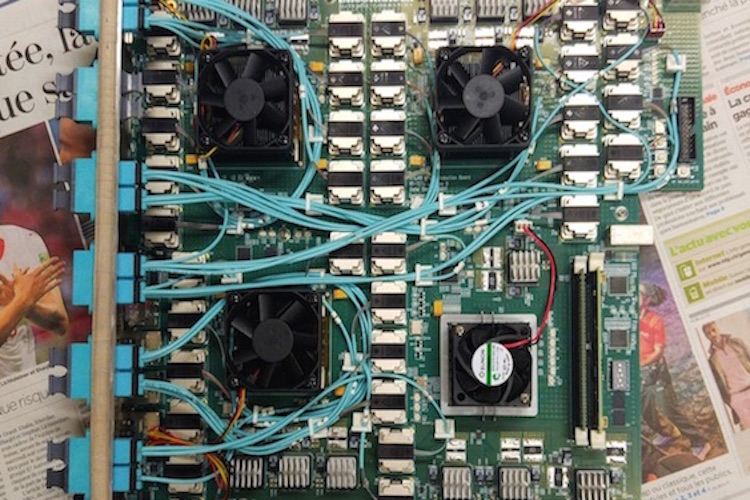High-Speed Electronics

High-Speed Electronics
Complex objects often slip past our data filtering systems (triggers). By constructing extremely fast, sophisticated electronics systems that specifically search for these complex structures in real-time, we can recover these otherwise lost objects. This is the gFEX boosted object trigger for Run 3 of the LHC.
See more details at gfex.cern.ch
Approach
- The global feature extraction (gFEX) system is a hardware-based boosted object jet finder for the ATLAS trigger system.
- gFEX is an official Phase I upgrade project that will be installed in ATLAS in Spring 2021 and will be operational for Run 3 of the LHC. We have already recorded pp collision data during Run 2 on Oct 17, 2018!
- By allowing for trigger decisions to be based on a large, more global region of the calorimeter, the overlap and proximity between the local energy depositions can be incorporated as part of the trigger decision.
- This system can therefore process the entire calorimeter on a single electronics board. Dedicated trigger algorithms have been developed to reconstruct signatures of Lorentz-boosted particles such as top quarks, W/Z bosons, and even the Higgs boson.
- New jet algorithms can then be deployed at Level-1 such as the large-radius anti-kT algorithm. Jet substructure information can also be incorporated into the selection algorithm in order to reduce the rate from light jet backgrounds while maintaining high efficiency for Lorentz-boosted massive particles.
- In addition to jet substructure, gFEX will also implement a new pile-up suppression scheme based on an energy-density-based subtraction for jets and missing transverse energy. As the instantaneous luminosity increases, this subtraction scheme allows for calorimeter-based jet thresholds to remain constant.
- For the High-Luminosity LHC (HL-LHC) our group is also working on global hadronic reconstruction algorithms for the Global Trigger System that will have access to full-granularity information from the calorimeters for detailed object reconstruction and identification.